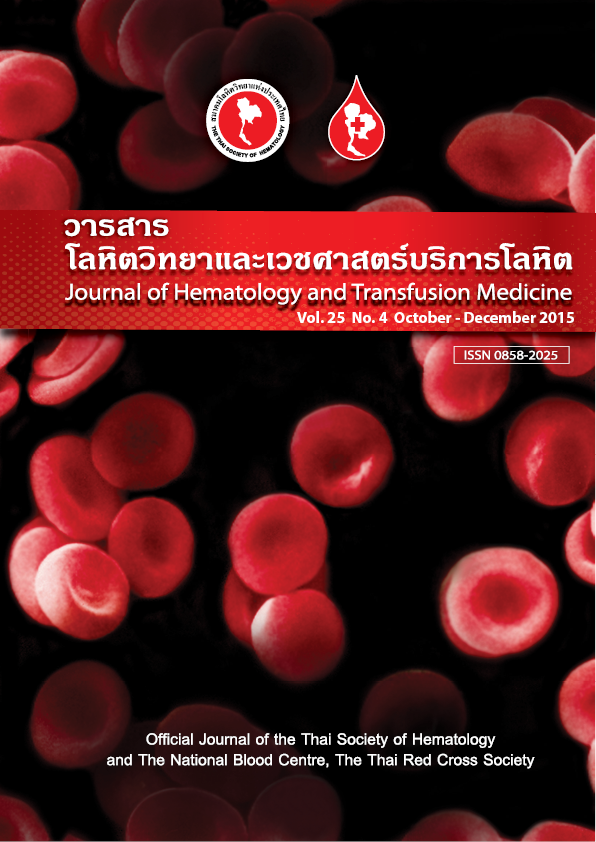Identification of Clinically Significant Alloantibodies in Thai Patients with Autoimmune Hemolytic Anemia
Keywords:
AIHA, Alloantibody, Identification, ZZAP reagent, Allogeneic adsorptionAbstract
Objective: To identify clinically significant alloantibodies in Thai patients with autoimmune hemolytic anemia
(AIHA) by acid elution technique, standard antibody identification technique and ZZAP allogeneic adsorption
technique. Materials and Methods: Fifty patients with AIHA who had positive direct antiglobulin test (DAT)
and positive antibody screening were included. Acid elution kit was used to identify IgG antibodies bound on
patient’s RBCs. Standard antibody identification and allogeneic adsorption with ZZAP-treated RBCs were used
to identify alloantibodies in patient’s plasma. Results: A total of 20 alloantibodies were found in 16 (32%) of 50
samples but not found in eluate. The alloantibodies included 6 (30%) anti-S, 5 (25%) anti-Mia, 4 (20%) anti-E, 1
(5%) anti-c, 1 (5%) anti-Jka, 1 (5%) anti-Jkb, 1 (5%) anti-Dia and 1 (5%) anti-N. Fifteen (30%) samples had clinically
significant alloantibodies (IgG) with a total of 19 specificities. Four samples showed 4 clinically significant
alloantibodies which could be identified by allogeneic adsorption techniques but not by standard antibody
identification. Conclusion: Patients with AIHA are at significant risk of red cells alloimmunization. Further
testing with adsorption technique should be performed to identify alloantibodies for patients who had history of
transfusion before transfusion of RBCs.



